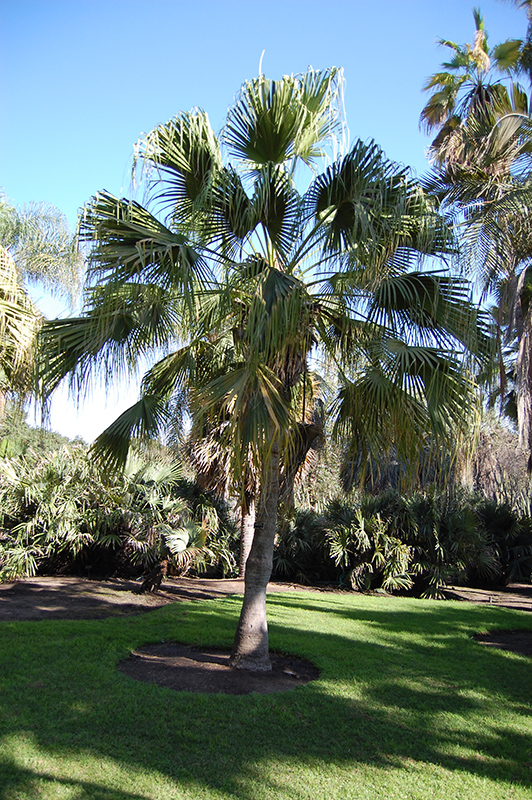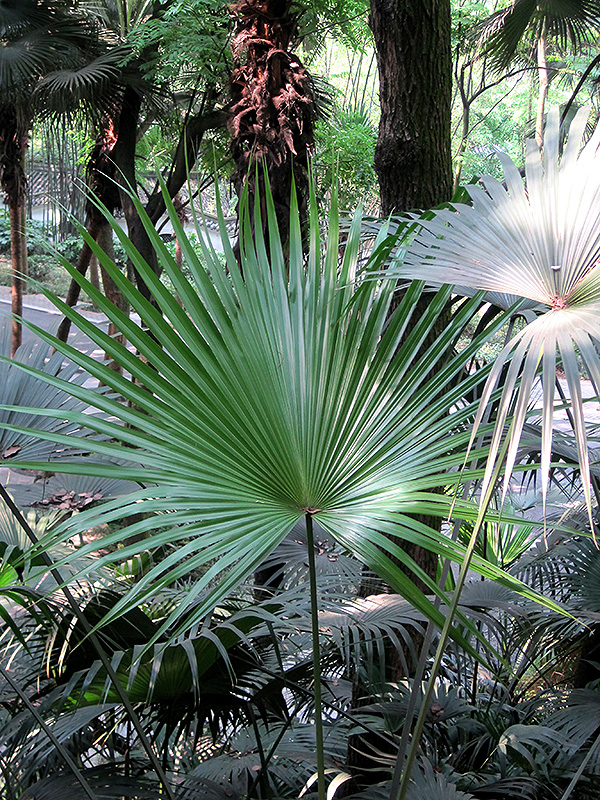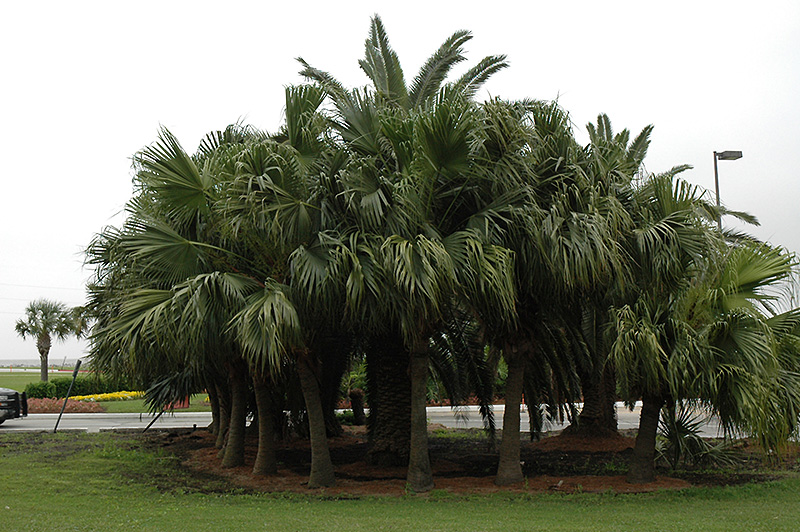30 feet
12 feet


9a
Fountain Palm
Chinese Fan Palm is primarily valued in the landscape for its canopy of attractive foliage which towers high above the ground. It has attractive dark green evergreen foliage. The glossy lobed palmate leaves are highly ornamental and remain dark green throughout the winter.
Chinese Fan Palm is an evergreen tropical plant with a strong central leader and a towering form, with a high canopy of foliage concentrated at the top of the plant. Its average texture blends into the landscape, but can be balanced by one or two finer or coarser trees or shrubs for an effective composition.
This tropical plant will require occasional maintenance and upkeep, and usually looks its best without pruning, although it will tolerate pruning. It has no significant negative characteristics.
Chinese Fan Palm is recommended for the following landscape applications;
- Accent
- Vertical Accent
- Hedges/Screening
- General Garden Use
- Container Planting
Chinese Fan Palm will grow to be about 30 feet tall at maturity, with a spread of 12 feet. It has a high canopy of foliage that sits well above the ground, and is suitable for planting under power lines. As it matures, the lower branches of this tree can be strategically removed to create a high enough canopy to support unobstructed human traffic underneath. It grows at a medium rate, and under ideal conditions can be expected to live for 40 years or more.
This tropical plant does best in full sun to partial shade. It prefers to grow in average to moist conditions, and shouldn't be allowed to dry out. It is not particular as to soil type or pH. It is somewhat tolerant of urban pollution. This species is not originally from North America.
Chinese Fan Palm is a fine choice for the yard, but it is also a good selection for planting in outdoor pots and containers. Because of its height, it is often used as a 'thriller' in the 'spiller-thriller-filler' container combination; plant it near the center of the pot, surrounded by smaller plants and those that spill over the edges. It is even sizeable enough that it can be grown alone in a suitable container. Note that when grown in a container, it may not perform exactly as indicated on the tag - this is to be expected. Also note that when growing plants in outdoor containers and baskets, they may require more frequent waterings than they would in the yard or garden. Be aware that in our climate, this plant may be too tender to survive the winter if left outdoors in a container. Contact our experts for more information on how to protect it over the winter months.


